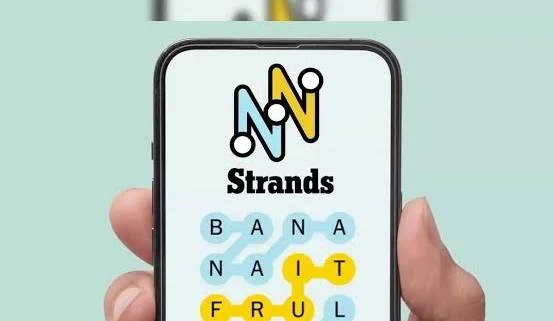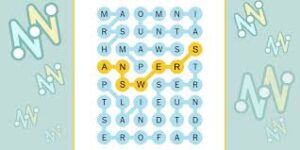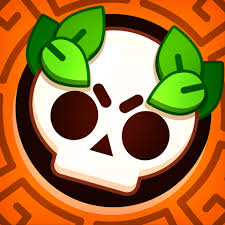The NYT Strands Puzzle is the latest brain teaser from The New York Times, designed to challenge your vocabulary, test your pattern recognition, and sharpen your linguistic skills. Much like its predecessors—Wordle, Spelling Bee, and Connections—the Strands Puzzle has quickly captured the attention of puzzle enthusiasts worldwide. If you’re someone who loves word games, this is the next big thing you need to try.
In this detailed blog, we will explore what the NYT Strands Puzzle is, how to play it, why it’s so addictive, tips to improve your solving skills, and how it compares to other NYT games. This article is designed to be SEO-friendly with the primary focus keyword “NYT Strands Puzzle” used organically throughout.
What is the NYT Strands Puzzle?
The NYT Strands Puzzle is a daily word game released by The New York Times as part of its growing suite of interactive puzzles. The objective is simple yet challenging: identify hidden words in a grid of scrambled letters based on a given theme.
Each puzzle provides a clue, and players must locate words connected to that clue. The grid contains multiple words arranged horizontally, vertically, diagonally, or backwards. In addition to the theme words, each puzzle also contains a special word called the “Spangram”, which touches two opposite sides of the board and is often directly related to the puzzle’s theme.
How to Play the NYT Strands Puzzle
🧠 Game Rules:
-
Each day, a grid of letters appears with a theme clue at the top.
-
Find words related to the clue by selecting adjoining letters. Words can be formed in any direction.
-
There’s a Spangram in every puzzle that connects two sides of the grid.
-
Finding the Spangram reveals the theme words visually.
-
You can shuffle the board anytime for a new perspective.
✔️ Steps to Play:
-
Visit The New York Times Games and click on the Strands section.
-
Read the theme clue carefully.
-
Start by searching for obvious words related to the theme.
-
Look for longer words or unusual patterns—these often lead to the Spangram.
-
As you find words, the grid will automatically adjust or highlight.
Why is the NYT Strands Puzzle So Popular?
🔥 Key Reasons for Popularity:
-
Simple Yet Challenging: Easy to understand but requires deep thinking.
-
Daily Brain Workout: Keeps your brain sharp and enhances vocabulary.
-
Beautiful Interface: Clean, interactive design with responsive mechanics.
-
Theme-Based Fun: Every puzzle has a unique theme, offering variety.
-
Social Sharing: Players love sharing their wins and discussing strategies online.
-
Part of NYT’s Word Game Ecosystem: Fans of Wordle, Spelling Bee, and Connections have naturally gravitated toward Strands.
Tips and Tricks to Master the NYT Strands Puzzle
🏆 Winning Strategies:
-
Understand the Theme: The clue is everything. Focus on synonyms, categories, or related concepts.
-
Search for Common Letter Patterns: Look for prefixes (pre-, un-, re-) or suffixes (-ing, -ed, -tion).
-
Find the Spangram Early: If you spot the Spangram, the theme words become easier to find.
-
Shuffle Often: Sometimes a new letter arrangement makes hidden words obvious.
-
Look for Long Words: Longer words are usually the Spangram or critical theme words.
-
Use Process of Elimination: If certain areas of the grid look empty, focus there.
-
Practice Daily: Like any puzzle, the more you play, the better you get.
Comparison: NYT Strands Puzzle vs Wordle vs Spelling Bee
| Feature | NYT Strands Puzzle | Wordle | Spelling Bee |
|---|---|---|---|
| Objective | Find themed words | Guess a 5-letter word | Form words from letters |
| Difficulty | Moderate to Hard | Easy to Moderate | Moderate |
| Time to Solve | 5-15 minutes | 2-5 minutes | 10-30 minutes |
| Unique Feature | Spangram & themes | Limited attempts | Pangram & scoring |
| Replayability | High | Medium | High |
The NYT Strands Puzzle offers a different challenge compared to Wordle, which relies on deduction, and Spelling Bee, which is purely about forming words. Strands blends thematic thinking with spatial pattern recognition.
Why You Should Play the NYT Strands Puzzle
✅ Benefits of Playing:
-
Boosts cognitive function
-
Expands vocabulary
-
Enhances pattern recognition
-
Provides daily entertainment
-
Reduces stress and improves focus
Moreover, since it’s updated daily, there’s always a fresh challenge waiting.
How to Access the NYT Strands Puzzle
-
Available directly on the NYT Games website.
-
Free to play during its beta phase.
-
May be included in the NYT Games subscription alongside Wordle, Spelling Bee, Connections, Crossword, and more.
Simply visit:
👉 https://www.nytimes.com/games
NYT Strands Puzzle: Frequently Asked Questions (FAQs)
🔸 Is the NYT Strands Puzzle free?
Yes, during the beta period, it is free. It may later be included in the NYT Games subscription.
🔸 What is a Spangram?
The Spangram is a word in the puzzle that connects two sides of the grid and directly reflects the theme.
🔸 Can words be diagonal?
Yes, words can be formed in any direction—horizontal, vertical, diagonal, or even backward.
🔸 Is there a mobile app for Strands?
Currently, it’s accessible through the browser on both mobile and desktop. It may be integrated into the NYT Games app in the future.
🔸 What happens after solving?
Once you solve all theme words and the Spangram, the grid celebrates with visual effects, and you can share your results.
Final Thoughts on the NYT Strands Puzzle
The NYT Strands Puzzle is more than just a word search—it’s a delightful combination of logic, wordplay, and lateral thinking. Whether you’re a seasoned puzzle expert or a casual gamer, Strands offers an engaging experience that’s both relaxing and mentally stimulating.
If you enjoy Wordle, Connections, or Spelling Bee, then the NYT Strands Puzzle is a must-try addition to your daily routine. As it continues to evolve based on user feedback, it’s set to become another staple in the world of online word games.
🔖 Disclaimer:
This blog is for informational purposes only. We are not affiliated with The New York Times or its gaming division. All trademarks, including NYT Strands Puzzle, Wordle, Spelling Bee, and Connections, are property of The New York Times Company. The information provided here is accurate to the best of our knowledge at the time of writing and subject to change. For the official game, rules, and updates, please visit the official NYT Games website.




